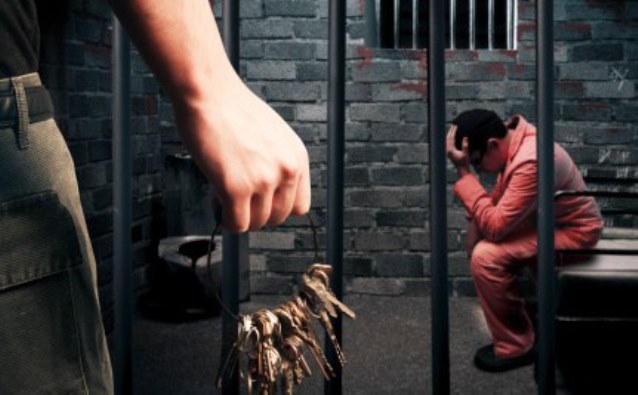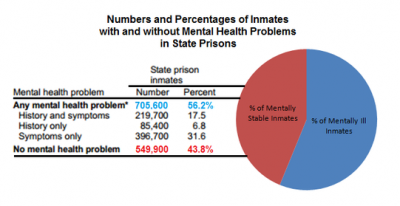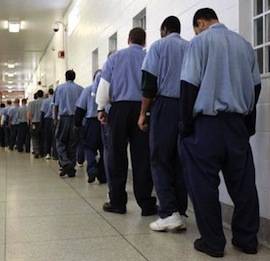 Eliminate warehousing of the severely mentally disturbed in our prisons; continuing to do so spells poor management by state corrections officials.
Eliminate warehousing of the severely mentally disturbed in our prisons; continuing to do so spells poor management by state corrections officials.
By Ricardo Ferrell,
VOD Field Editor

Ricardo Ferrell
Three decades ago we began to see a significant number of the severely mentally ill pop up in jails & prisons. In Michigan, somewhere between 1987-2002, the majority of the mental hospitals/institutions were ordered closed by both the Blanchard and Engler Administrations. Thus, jails and prisons became immediate dumping grounds for those diagnosed with severe mental illnesses, but prior to them starting to pop up in jails & prisons – many found themselves on the streets, usually homeless and without proper care for their needs.
I have often wondered how convenient it was during this period that the prison expansion and boom also happened. The mid to late 80’s ushered in a prison build up like we have never before seen. At least 30 or more correctional facilities were constructed; boosting the Michigan prison population from approximately 10,000 – 12,000 to roughly over 51,000 an increase of around 400%.
Today, there are some 9,000, or 23% diagnosed with a severe mental illness within the Michigan Department of Corrections. The number is likely higher as there are many who go on without letting their issues be known to a (QMHP) Qualified Mental Health Professional usually due to not wanting to have the stigma which they believe to be associated with a negative connotation of some sort and the perception of shame that they would be tagged for a better term, a bug.

Chart from national Bureau of Justice Statistics.
And, in a prison setting nobody wants to receive the ridicule, mistreatment, belittling, and embarrassment of such a diagnosis. Let’s take Ronalle Hizerick, a name I created to protect the true identity of an individual who I would be called to observe after he had been placed on suicide watch from a near life ending self-injury to one of his main arteries.
During my second observation with Ronalle he revealed to me that the reason he attempted to take his own life was that he had just learned that both his wife and young daughter had been diagnosed with brain cancer and he just couldn’t take not being there for them. Ronalle had less than one year to his earliest release date, yet still his mental illness was so severe that being locked up in prison actually caused him more harm because simply put, prison is no substitute for a mental institution.

A lawsuit against the MDOC has been filed on behalf of Janika Edmund, who hung herself last year in the Huron Valley Women’s facility, known for its horrible conditions. Prison guards failed to intercede although they knew she was suicidal.
This writer over the last five years has worked in the Prisoner Observation Aide Program known as Suicide Watch which utilizes carefully selected and specially trained prisoners with the task of observing fellow prisoners in trying to curtail and/or prevent them from engaging in suicidal and self-injurious behaviors because it has been proven by evidence-based analysis that those experiencing mental instabilities and disorders may be more willing to open up and share with another prisoner why they are having a crisis before revealing such to a staff member or QMHP.
Additionally, the program has proved to be cost effective as well because prior to the utilization of prisoners; corrections officers were assigned an added task of observing at-risk inmates, but it was costing millions and millions of dollars, so the MDOC elected to train prisoners instead to render such services in conjunction with a treatment plan assessed by a Qualified Mental Health Professional.
Rendering this service at three different facilities has afforded me the opportunity to better understand a severely mentally ill individual who engages in harmful behaviors and on many occasions I have been able to prevent them from self-injurious episodes and saved many of their lives.
Although the above-mentioned 9,000, or 23% who have been diagnosed with a severe mental illness is the reported number, there are certainly a higher number of those within Michigan prisons who have a mental illness yet to be reported and diagnosed which is making today’s prisons more like modern day mental institutions. If the State of Michigan wish to address this serious problem it must find viable ways to tackle it head-on maybe by reversing the practice of housing mentally disturbed individuals in its prisons.

Prisoners wait for medications, often for psychiatric problems that should be treated in hospital or outpatient settings.
Using the monies it costs to house the mentally ill (approximately $36,000 — $40,000 per year) to reopen or construct new mental institutions would be the best course of action assuring this special needs population receives the maximum treatment they require. The following calculations could help reach such a goal: 1) $36,000 per year for each mentally ill prisoner; 2) 9,000, or 23% equates to $324,000,000 per year; and 3) $324,000,000 or more depending on the actual yearly cost of above group amounts to over two-thirds of a billion dollars. More than enough to open and operate mental institutions and provide quality mental health services to the severely mentally ill.
Currently, there are approximately 400,000 Michigan citizens diagnosed as being severely mentally Ill, and if nothing is done to reverse the failed policies of old administrations and current practices by the MDOC of housing mentally disturbed individuals in a prison setting, then we are looking at quite possibly a higher number in the near future. The Woodland Corrections Center located in Whitmore Lake, was converted to become a mental health facility which is operated by the MDOC. Some of the vacant correctional facilities across the state could easily be converted to mental health facilities to accommodate the growing demand for this particular group in our prisons.
DONATE TO VOICE OF DETROIT TO KEEP OUR STORIES COMING:
Voice of Detroit is published pro bono. You don’t have to pay to access our stories. But there are substantial out-of pocket costs associated with its publication. Currently we are running in the red, so any donation amount is much appreciated. Donate by clicking https://www.gofundme.com/VOD-readers-up.




